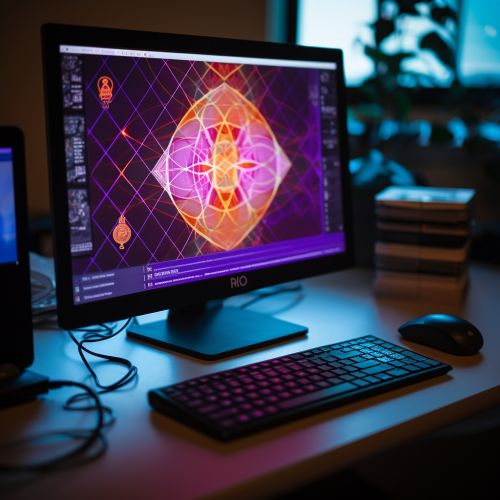The Physics of Quantum Information in Secure Communication
Introduction
Quantum information science is a rapidly growing field that intersects with physics, computer science, and mathematics. It is concerned with the use of quantum mechanics to process and transmit information. One of the most promising applications of quantum information science is in secure communication, where the principles of quantum mechanics are used to encode, transmit, and decode information in a way that is resistant to eavesdropping. This article will delve into the physics of quantum information in secure communication, exploring concepts such as quantum entanglement, quantum superposition, and quantum key distribution.


Quantum Mechanics and Information
Quantum mechanics is a branch of physics that deals with phenomena on a very small scale, such as atoms and subatomic particles. Unlike classical mechanics, which can precisely predict the future state of a system given its initial conditions, quantum mechanics only provides probabilistic predictions. This inherent uncertainty is a key feature of quantum mechanics and has profound implications for information processing.


In classical information theory, information is represented as bits, which can be either 0 or 1. However, in quantum information theory, information is represented as qubits, which can be in a superposition of states. This means that a qubit can be in a state that is a combination of 0 and 1, with certain probabilities associated with each state. This property allows quantum systems to process information in ways that are impossible for classical systems.
Quantum Entanglement
Quantum entanglement is a phenomenon in which two or more particles become linked in such a way that the state of one particle is immediately connected to the state of the other, no matter how far apart they are. This "spooky action at a distance," as Einstein famously called it, is one of the most intriguing aspects of quantum mechanics and is a key resource in quantum information processing.


In the context of secure communication, quantum entanglement can be used to create a shared secret key between two parties. This process, known as quantum key distribution, allows the parties to communicate securely, even in the presence of an eavesdropper.
Quantum Key Distribution
Quantum key distribution (QKD) is a method of generating a secret key between two parties using the principles of quantum mechanics. The key is generated in such a way that any attempt to eavesdrop on the key will be detected, ensuring the security of the communication.


QKD protocols, such as the BB84 protocol and the E91 protocol, use quantum bits (qubits) to encode the key. These qubits are sent over a quantum channel, such as a fiber-optic cable or free space. If an eavesdropper tries to measure the qubits, they will disturb the quantum state of the qubits due to the no-cloning theorem and the Heisenberg uncertainty principle, revealing their presence.
Quantum Communication Networks
Quantum communication networks are systems that use quantum mechanics to transmit information. These networks can provide secure communication, quantum computation, and quantum sensing capabilities. They consist of quantum nodes, which can generate, store, process, and measure quantum information, and quantum channels, which transmit the information.


Quantum communication networks can be either terrestrial or satellite-based. Terrestrial networks use fiber-optic cables to transmit quantum information, while satellite-based networks use free space. Satellite-based networks have the advantage of being able to cover long distances, making global quantum communication possible.
Future Prospects
The field of quantum information in secure communication is still in its early stages, but it holds great promise. As quantum technology continues to advance, we can expect to see more practical applications of quantum communication, such as secure online banking, confidential government communications, and secure cloud storage.


However, there are still many challenges to overcome, such as improving the rate of quantum key distribution, increasing the distance over which quantum communication can occur, and developing practical quantum repeaters to extend the range of quantum networks.
